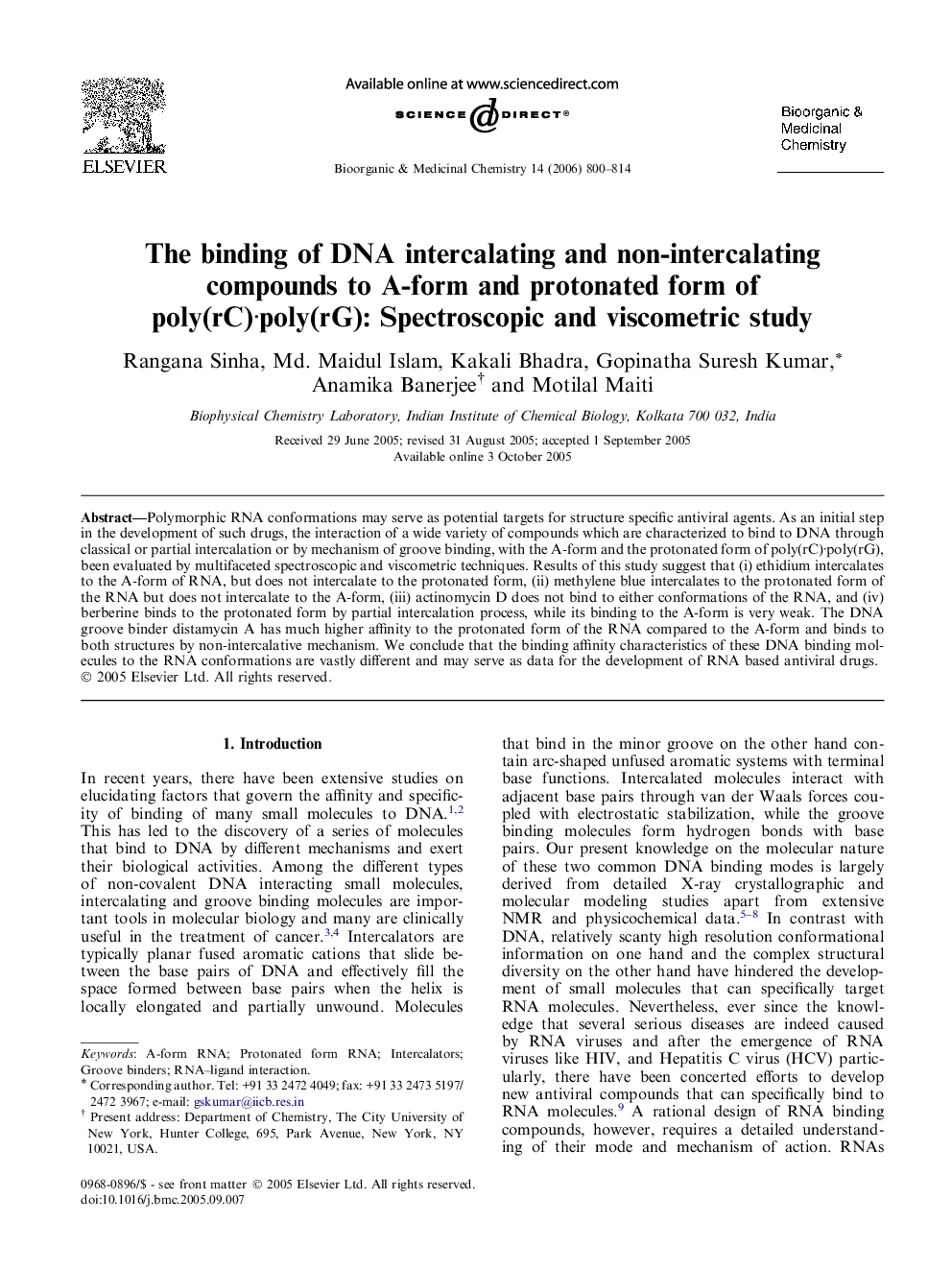| کد مقاله | کد نشریه | سال انتشار | مقاله انگلیسی | نسخه تمام متن |
|---|---|---|---|---|
| 1366165 | 981582 | 2006 | 15 صفحه PDF | دانلود رایگان |

Polymorphic RNA conformations may serve as potential targets for structure specific antiviral agents. As an initial step in the development of such drugs, the interaction of a wide variety of compounds which are characterized to bind to DNA through classical or partial intercalation or by mechanism of groove binding, with the A-form and the protonated form of poly(rC)·poly(rG), been evaluated by multifaceted spectroscopic and viscometric techniques. Results of this study suggest that (i) ethidium intercalates to the A-form of RNA, but does not intercalate to the protonated form, (ii) methylene blue intercalates to the protonated form of the RNA but does not intercalate to the A-form, (iii) actinomycin D does not bind to either conformations of the RNA, and (iv) berberine binds to the protonated form by partial intercalation process, while its binding to the A-form is very weak. The DNA groove binder distamycin A has much higher affinity to the protonated form of the RNA compared to the A-form and binds to both structures by non-intercalative mechanism. We conclude that the binding affinity characteristics of these DNA binding molecules to the RNA conformations are vastly different and may serve as data for the development of RNA based antiviral drugs.
Interaction of DNA intercalators (ethidium, actinomycin D, and methylene blue), partial intercalator (berberine), and groove binder (distamycin A) with A-form and protonated form of poly(rC)·poly(rG) structures clearly established that the complex of ethidium-A-form and methylene blue-protonated form occurred by intercalation process, while partial intercalation was observed in berberine-protonated form complexation. Actinomycin D does not bind to either of the polynucleotide structures. The complexation of ethidium-protonated form, methylene blue-A-form, berberine-A-form, distamycin A-protonated, and A-form is formed by non-intercalative mechanism.
Journal: Bioorganic & Medicinal Chemistry - Volume 14, Issue 3, 1 February 2006, Pages 800–814